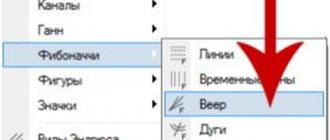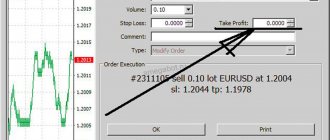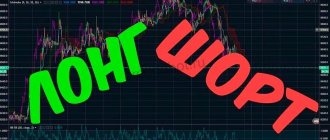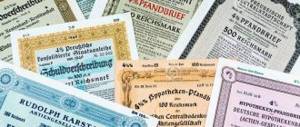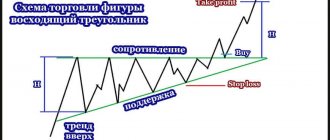Hello, friends ! At the opening of the Forex market on Monday, there are often significant price jumps, which are called gaps. GAP – literally means a gap, a jump. And in this video lesson we will talk about how to find these jumps, where they come from and analyze the strategy for trading on gaps (everything is not as simple as it might seem).
Gap (GAP) is the difference between the closing price of the Forex market on Friday and the opening price on Monday.
Why do I use gaps in my trading?
Hi all.
I traded for a very long time without knowing about gaps at all. And my trading was not the most profitable not because of this ignorance. What a gap is in stock trading is not necessary to know in order to trade well. In addition to gaps, there is a lot of things that speculators who drive the market back and forth need to know and take into account. In search of a golden trading strategy, sorting through a lot of high-quality and slag materials, I also became acquainted with the concept of gap. To say that after this my trading became better and brought more profit means deceiving not only you, but also myself.
You can know a bunch of cool trading tricks, and always trade at a disadvantage. If you are reading these lines, it means you want to improve your trading. Most likely, it is not going well for you. But we will talk about this in section 5 of the article.
But I can tell you with complete confidence that the gap is one of the market patterns that are worth noticing. I know that many traders, no matter how much they study, cannot understand all the market patterns, but having understood the gaps, they based their trading systems only on them and traded profitably for a long period of time.
I'm not a fan of such strategies. But for me, any strategy becomes a strategy if it passes all experimental tests. It's the same as launching a rocket to the moon. This means that gap trading strategies have a place. The simpler the better!
I use gaps, but indirectly. I don’t rely on them completely.
Therefore, study this market pattern. Test it, try to combine it with your trading. Or, after unsuccessful takeoffs, throw this strategy in the trash and delete my article from your browser tabs. This means it's not yours! For now, let's study these patterns in the form of gaps. But what if? Will it suit you?
What is a gap in trading
There are many definitions of gap. The most understandable thing for everyone is when they say that there is simply emptiness. Hole! There are no quotes!
Price holes at Sberbank
The hole may be so small that it is difficult to see without zooming in and out on the 5-minute charts. Therefore, the gap must be recognized not only visually, but also through numbers.
The gap is very small - only 3 points
Causes of a gap
Markets close and open on their own schedule, and the economic and political life of the world has no weekends or holidays. The event may suddenly make a splash over the weekend, and the markets will win back on Monday. Someone will hastily close their positions, fearing that the situation regarding this news will worsen even more. And the market will open sharply higher or lower, creating a hole.
It is not necessary that the price will continue to fall or rise. Hysteria, or in other words, acting out the news background, can only end in the first hour of trading.
This can happen not only on news, force majeure events, on holiday weekends, but also occurs between the afternoon and evening sessions, on the day of the paper cutoff. This is when shares go through the closure of the register and the price the next day falls by the amount of dividends. And it is worth making an important note that such gaps are formed at the opening of a new trading session.
On illiquid instruments, gaps are mainly formed intraday.
Many gaps on the 5-minute chart of an illiquid asset
Example of a gap between day and evening sessions
Let's look at the oil futures chart. The day session ends at 18-45 Moscow time and 15-minute clearing begins. And exactly at 19-00 Moscow time, trading takes place in the evening session. Very often, gaps are formed in these joint boundaries. Therefore, positions must be transferred very carefully from the day session to the evening session. There must be a margin of safety.
Gap between day and evening sessions on oil futures
Example of a dividend gap
In 2021, dividends on Sberbank shares amounted to 16 rubles. The cutoff was in the summer. The chart shows two regular gaps and one dividend gap. Do you feel the difference in price holes? If you find yourself before the cutoff in a long position, then you are guaranteed a margin call.
Sberbank dividend gap in 2021
An example of a holiday gap
Let's look at an example where even one holiday weekend can lead to a gap. True, in my example below, on Sberbank shares, it closed during the same trading session.
After the November 4 holiday, a bullish gap formed on Sberbank
Features of the head and shoulders reversal pattern
On a Forex chart in its pure form, you will rarely see an ideal reversal design , for the following reasons:
- Uneven shoulder width. This arises from different times of formation of the elements of the figure.
Example of different shoulder widths of the reverse technical analysis figure - The neckline may be slightly interrupted by the tails of Japanese candlesticks. At the same time, we cut off the spiers of the candles and build a line along the bodies of the candles. An example of such a construction is shown in the figure:
Interrupting the base of the GiP with the tails of Japanese candles - Not equal shoulder height. The left shoulder relative to the right can be higher, lower or at the same level.
Different shoulder heights
In which instruments do gaps occur most often?
Gaps can occur in all instruments. But on illiquid instruments, I repeat, the gap occurs within the day.
Trading strategies on illiquid instruments based on gaps do not work.
Gaps are an everyday reality there. In most cases, due to the small number of sellers or buyers.
If you take gaps into your trading, it is better to use liquid instruments.
Otherwise, just ignore them. The only thing is that there is still a dividend gap. Above I gave you a good example with Sberbank. Well, for this you need to know the cut-off date for the instrument. Otherwise, such gaps can be impressive, and you can easily get into a margin call. And goodbye to your trading career! Hello, Boss, in a stuffy office at the end of town!
I was also asked a question about the size of the gaps?
This is not such an important parameter for trading. The only thing is that the margin of safety when transferring any position to the next trading day must necessarily include the occurrence of a gap. Even if it doesn’t exist, you will protect your account this way.
Now let's formulate two more important patterns that I notice in my trading:
- The more liquid the instrument, the fewer gaps there are.
- Sometimes, very rarely, even on liquid instruments a gap may form within the day due to news.
How to identify and recognize a gap (its onset and end)
In order to determine the occurrence of a gap, it is enough to compare the maximum price of the previous day with the opening price of the first candle of the new trading day, or the minimum price of the day with the opening price of the first candle of the new day.
And don’t look at the fact that 10 seconds after the opening of trading there was a price gap, and then it closed. All this can be tracked in 5 minutes. It's still a gap. It just opened and closed right away. To determine the end of the gap closing you need to:
- All gaps must be marked with a horizontal line. I mark them with a thin red line. This is easier to see and the color red is usually associated with danger and something particularly important.
- If the price that approached the gap exceeded the minimum price during upward dynamics, and the maximum price during downward dynamics, or repeated this figure one to one, then the gap is considered closed.
- We remove the red line from the graph.
Rules
- The gap must be at least 20 points!!!
- We enter after the first M30 candle closes at the market open
- The goal is 3-4 points below/above the Low/High point of the last Friday candle M30
- Stop Loss = Take Profit X 1.5
PPS We now have an online statistics service on gaps on our website - with its help you can find out the average values of the size, duration and probability of closing gaps for different pairs.
Best regards, Pavel Vlasov TradeLikeaPro.ru
What does it mean to close a gap?
It's simple. This means closing this price hole. It doesn't matter when. This could happen in years, or maybe in five minutes. And here it is not necessary that the price slightly touches the lower border of the gap and rebounds. It can simply crash below the gap in an uptrend and soar above the gap in a downtrend.
Very often, when a gap does not close by a few tiny points, for most market players this will still be considered the closing of the gap.
Why?
This minimizes the risks of making the wrong move or simply reducing the number of unprofitable stupid trades.
There is also an axiom in the market that gaps tend to close. I don’t recommend making specific trading plans based on this, but you need to understand why gaps can close.
One of the reasons is that short-term traders entered when a gap appeared, and after achieving profit targets, they began to fix their positions. Because of this, a reverse price movement occurs. And so the gap is filled. It might be like this:
Traders opening towards closing a gap in a short-term trade
On a bullish gap, they short the market in order to close the gap.
The possible loss scenario for such traders is shown. The figure above shows a special case when the gap did not close quite a bit and those participants who went short received a stop-loss. If this is a very strong trend, then short-term traders will simply close their positions with a loss; they simply do not have enough quantitative advantage over the army of those traders who followed the trend.
Traders opening towards closing a gap in a medium-term trade
Is this gap trading option more interesting? Do you agree? There are no newbies here anymore. If closing a gap in a short-term trade looks more like a gamble, then this is already a serious trading plan. That is why it is necessary to notice all the gaps on the charts. They may be needed in a few months, a year or even more...
Everything is simple here. Based on the signals from your trading strategy, you enter the market, and adjust your profit goals using gaps that remain from old trends. In the figure I show you an example so that the idea itself is clearer. But there are dozens of drawings of different situations.
Closing gaps as profit targets in medium-term trades
Let's sum it up
Gaps can be powerful tools for a trader. They provide additional structural factors to the current levels on the chart, which increases our chances of making a profit.
Remember the following points when using gaps:
- Large, obvious gaps will most likely lead to a change in market direction.
- Gaps that occur in higher time frames are larger than those that occur in lower time frames.
- An unfilled gap is one that remains unfilled for more than five trading days.
- When using gaps as an additional structural factor at key levels, remember that the levels must already be confirmed.
Next time you look at your charts, be sure to take note of any gaps. They may provide you with additional trading opportunities.
Traders opening in the direction opposite to the opening of the gap
You should understand that even if it opens correctly, the market can still close you, accidentally catching you with the shadow of a candle. Or maybe the market after the gap will grow a little and turn down. Therefore, never take large entry volumes.
If you close with a stop loss, the losses should be acceptable for your trading strategy. The figure shows one such situation. If a trader here takes a long position with a risk of no more than 2%, then he is a good trader. Well, it’s knocked out, it happens. Such a profession!
At a bullish gap, they go long in order to continue growth. The loss option for such traders is shown
❌ Is it possible to refuse GAP insurance?
The GAP option is strictly voluntary - no one under any circumstances can force a person to purchase additional insurance. Therefore, in order to refuse GAP, it is enough not to initially include it in the CASCO policy.
If there is a need to waive the GAP after the conclusion of the contract, then the usual rules for insurance contracts apply:
- during the cooling period (14 days), the policyholder can return the funds in full;
- in case of early termination after a cooling-off period, the insurer retains part of the insurance premium when returning funds, according to the terms of the contract.
A car was damaged at the car wash. How to compensate for damage
Read
The gas station filled us with bad gasoline. Is it possible to get compensation
More details
Non-contact accident. Is compensation for damages required under compulsory motor liability insurance?
Look
Is it possible to predict gaps?
Here you can get a barrage of criticism. I'm ready! ))) I'll tell you that you can predict the appearance of a gap in some situations on the stock exchange. But you can’t bet everything on this. It is also necessary to strictly adhere to risk management.
But those who assume that there will be a gap here will have time to buy or sell at the best price and with the best stop. Yes, it may turn out that this stop will knock out the market, but there is still an attempt or even a few to enter. And then set the loss limiter again. Now let’s think about when we can predict the appearance of a gap:
- When the market moves back and forth from one important level to another, stops are knocked out. It pierces the levels deeply and returns to consolidation again.
- When the triangle has narrowed and there is nowhere to go, and still the market does not find the strength to launch an impulse to jump out of this framework.
- When the trend changed in the market. And the most ignorant traders, realizing this, begin to buy in the hope that they purchased assets at the steepest price. Then an army of those still ignorant joins in, with their minds ignited late, with belated signals of their strategies.
- Bomb news. For example, a coup d'etat. Economic news related to oil.
- News directly related to the asset. For example, you are trading Gazprom shares. And positive news came out by agreement with all parties on the South Stream gas pipeline.
- At the end of a long weekend. For example, New Year's holidays.
Features of order triggering in case of a gap
I would like to consider two typical order triggers when working with gaps.
The first example of orders triggering on a gap
During the previous trading session, you gained some position. Set a stop loss. You mentally calculated the profit you could get and went to rest. And the next day, when you turn on your computer, you see that you have an unfulfilled application.
The stop loss was triggered, but the order was not executed due to a gap
How so? You definitely remember that you did not place a simple order, but a stop loss. Is the broker confused? Or did someone use your password to use your terminal to trade on the market? No guys. It's all of you! It's just that you didn't make a safety margin for the event of an impulse at the opening of the next day or a gap. What is the article itself actually about?
Therefore your stop loss was accepted by the broker. The order at the activation price worked, and from the numerical value that was indicated in the application, the broker sent a simple execution order to the exchange. But it's already too late. The price has already skyrocketed or fallen a lot. And God forbid that this is not close to the margin call price limit.
In this case, you need to close the position at the current market price. There is no need to hope that the price will rebound. Yes! It may bounce, but if it doesn’t bounce, then the losses will be greater and the onset of your nervous breakdown cannot be avoided.
The second example of orders triggering on a gap
You found out the gap, compared your behavior according to your own trading strategy and decided to buy several lots. Look, there’s nowhere to put the order. Just take it and subtract 2% from the purchase price. This stop loss is also called mathematical.
And the market took and cut the stop loss. Or even missed it at high volatility so that this mathematical stop loss did not work. The market left you with unprofitable lots and an unfilled simple order.
Wrong decision to limit losses
Or, in general, they read a lot of analysts and decided that this was their finest hour. And you bought so many lots of the instrument that if the market turns around and goes against you, you will receive a loss of minus 10%.
All day the market grew and grew. And in the evening, against the news background, he took it and fell. It fell so much that it wiped out the so-called breakaway gap from the face of the market. And minus 10% of the capital that you earned the entire previous month left your account.
Simple gap
A simple gap is not as simple as it seems. Until this gap has outlived its usefulness, in most market situations it will be interpreted by everyone as a gap at the end, a gap at the gap, a gap at the break.
Why do you think?
Yes, because every single trader is impatient. I am also an impatient trader. But my deal journal helps me shake things up. And I want to quickly go to the market to earn money for an apartment, a car, or a vacation. Everyone wants a beautiful life, and give it quickly.
All this beautiful Instagram life just blows the minds of ordinary people. And after reading books and advice about entry points, they begin to see them in everything. At the slightest hint, the rest of the picture is conjectured. After all, you want to make millions quickly.
And then it turns out that this is an ordinary gap. And there are no other prerequisites for its appearance. The usual price gap on old news. But there is no trend, and important levels have not been overcome, and the volatility is very low. And the volumes are worse than on New Year's days.
Simple gap
For me, a simple gap is the first thing I think of any gap that arises. And I put this interpretation on a par with other strong arguments. If the probability of this gap degenerating into others is high, then I look for the optimal entry point. Often you have to wait for several hours. And of course we set a stop loss.
Take this idea and implement it in your trading!
Classification of the head and shoulders pattern
The following types of this technical analysis figure are distinguished depending on the angle of the base of the reversal structure:
- Sloping ascending neck (descending for reverse version). The current trading formation is characterized by the best risk to return ratio.
Slant ascending neck and working off a short on the mt4 chart - Sloping downward base (ascending for an inverted figure). The short is low and this increases the risk of the position.
Descending neck
As can be seen from the figure, a noticeable delay is very characteristic of this type. In fact , the asset is sold when most of the movement has already passed . - Direct formation base. The angle is practically or completely absent, as in the example of a long EURUSD currency pair.
Gap at the end
Such a gap is very insidious, especially for beginners. Let's start with the definition.
A breakout gap is a price hole that occurs before a change in trend direction. It may or may not close.
Now I’ll give you a classic example. Some trend is growing, growing almost without reversal. Even the most clueless traders are beginning to say that they have already outgrown the average growth over the years without pullbacks. It's time to fall. Or vice versa, in a downtrend, it’s time to grow.
All! At this moment, they get it in their head that if there is a gap now, then it will be a gap at the end.
And they don’t have any rules or other patterns at this moment. they reason based on emotions. Yeah! Now I will sell here with hangers and earn immediately plus 50% on the bill. Then they start reading their broker's news feed, hoping to find roughly the same forecasts.
And what do you think? Of course they will find them there. After all, the broker’s analytics are structured in such a way that you can enter either way. and everything will be right. The market technically puts it here, but the news background drags the market there. Therefore, friends, be careful with this gap.
It is not enough to make decisions on entering the market. Remember that if the trend is going up, then by entering this gap you will always enter against the trend. And according to my statistics, the most losing trades happen when entering against the trend. Here's a good example on Sberbank shares:
Even when there is nowhere else to grow, most players trade with the trend. Here, some day traders can drive the market forward on the strength of a good news background. I’m not sure about the big players at such large levels. You have to look at it by the glass. And here is a classic example of a gap on its way out.
A classic example of a gap on its way out
Gap to break
This is exactly the gap I love. He is the most predictable. Let's also start with a definition.
A gap gap is a price hole that occurs when the price comes out of some kind of consolidation, sideways trend, or the implementation of some kind of graphical pattern (head and shoulders, flag, etc.)
Above in the section there was a question: Is it possible to predict a gap? The break gap is very predictable. And with it you can enter the market well. It’s just that not all traders may have the patience to wait for either its onset or the onset of other market patterns.
For a good trader, waiting for a gap to break should not be a panacea. His emotional level should freeze at one value and not cause any negative reactions if this gap does not occur. Or, God forbid, it will become not a gap for rupture, but a gap for destruction.
We don’t know anything in advance. We only assume, and protect ourselves from negative consequences through risk management. When a gap occurs, there is a very high probability that the market will not close it. But this doesn't always happen. It happens that he closes this gap or comes very close to its beginning without ever closing it. And this is the stop for entering the bus of professionals! Remember it.
Typically, professionals place simple orders closer to the beginning of the gap, and place a stop loss behind the “broad shoulders” of some good level. After all, it’s not always possible to buy it right away. Where should we put the stop, comrades? Got it? This is happiness. Buy further or sell lower and you are guaranteed a stop loss of minus 5%. Or minus 2%, only faster and more useless.
Let's help other more seasoned guys from the market earn capital! And sit and read smart books about trading, while snacking on a palm bagel from Magnit!
Here is a classic example of a gap gap.
A classic example of a gap gap
results
Now you know what GAP means and how to work with it correctly. You may not agree with my point of view. This is fine. In this case, I suggest doing this:
- choose a reliable broker providing services in the Forex or stock market;
- register and open a demo account;
- look for price gaps on the chart of any trading asset and try to work with them according to the classic rules of technical analysis;
- Record your results and share your observations in the comments below the article.
See you again! Subscribe to new publications and don’t forget to share useful trading material with your friends on social networks.
PS Friends, if you are just starting to study stock exchange theory, then it will be useful for you to learn about technical analysis figures with images and examples.
If you find an error in the text, please select a piece of text and press Ctrl+Enter. Thanks for helping my blog get better!
Gap on the lead
A gap gap occurs on a stable upward or downward trend.
A breakaway gap is a price hole that appears after a strong movement and is an indicator of the strength of the trend. Most often, such a trend has two or more measuring gaps.
And his presence suggests that this is a very strong movement. These gaps can be good support for a growing trend. And good resistance in a downtrend.
Gap on a break on a very strong uptrend
As can be seen from the figure above, traders measure potential growth at such a gap. This will be considered the distance between such gaps in a strong trend. Most often, such potential movements are overfulfilled.
Look at the drawing for yourself. It can be seen that they set one profit goal, where it is necessary to close the position with a profit, and the price went even higher. If we did not close the position where we planned, then the profit plan would be exceeded.
